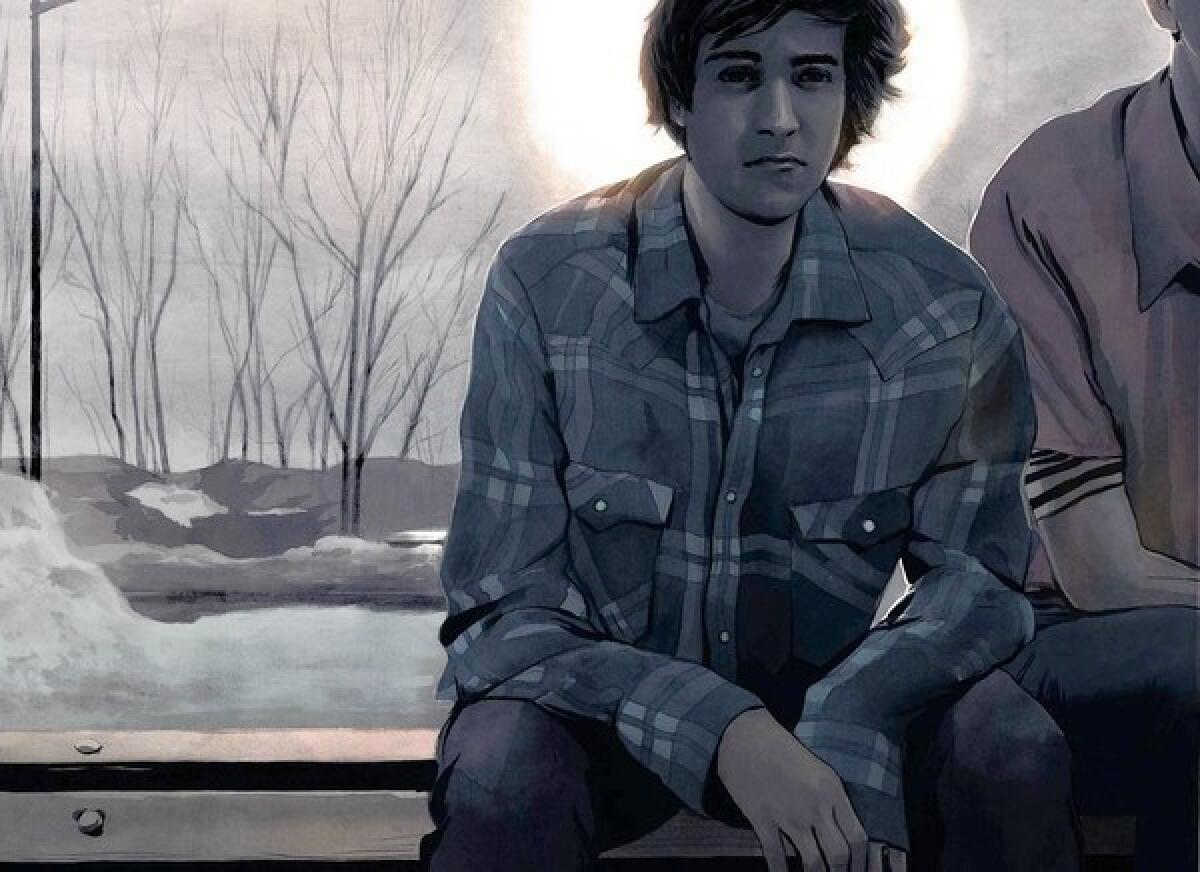Book Review: ‘Ten Thousand Saints’ by Eleanor Henderson

- Share via
Ten Thousand Saints
A Novel
Eleanor Henderson
Ecco: 400 pp., $26.99
“Ten Thousand Saints” is a whirling dervish of a first novel — a planet, a universe, a trip. As wild as that may sound, wonder of wonders, the book is also carefully and lovingly created, taking the reader far into the lives and souls of its characters and bringing them back out again, blinking in the bright light.
It helps if you know the territory — New York’s East Village and small-town Vermont, 1987 to 2006, but anyone can recognize the disorientation of the generation raised by hippies. Not the baby-boomer hippies who slid into the mainstream but the hippies who took to the woods, smoked a little too much Gertrude and remained on the margins, dragging their children through the dregs of their dreams.
The ones who made their way to New York, to St. Marks and Astor Place, found themselves on the front lines of the AIDS epidemic, listening to new kinds of music that were not as gentle as Joni Mitchell, Bob Dylan (or even Jimi Hendrix): punk, hip-hop and metal.
Eleanor Henderson, a writer who came up through America’s liberal arts — Middlebury College, an MFA program at the University of Virginia, literary magazines and journals like the Virginia Quarterly Review — and who now teaches at Ithaca College, knows that the best way to describe a generation, a period in history, is to provide intimate insight into a small group of characters. Her little band of four wounded kids forms the heart of the novel and Henderson bonds her readers to her characters by exposing their vulnerabilities right up front.
Jude’s father left when he was 9 after telling the young boy that he was adopted. His mother makes glass bongs and sells them on the shopping drag in their Vermont town. Jude’s friend Teddy has a mother who is a drunk and a drug addict and leaves town on the day we meet him, which is also the day he dies. Jude and Teddy are best friends, 15 and doing every reckless drug they can get their paws on — marijuana, cocaine, mushrooms, alcohol, petroleum distillate, turpentine and Freon, which is the one that kills Teddy at the dawn of the story.
But not before (and this is what puts Henderson on the path to greatness) some beyondness, some greater fate, some sparkling, dying star, sends Eliza, the daughter of Jude’s father’s girlfriend, for a visit to that Vermont town on that New Year’s Eve. Who knows why she makes love with Teddy in the bathroom of a party house just hours before he dies of hypothermia and heart failure? Who knows why the 16-year-old girl who gave Jude up for adoption drank through her pregnancy and gave her baby the telltale signs of fetal alcohol syndrome? Who knows why Teddy’s 19-year-old brother, a member of the straight-edge movement in New York City (no drugs, no alcohol, no meaningless sex) decides to step up and marry a now pregnant Eliza, crossing the border into New Jersey, where a 16-year-old didn’t need her parents’ consent?
“Ten Thousand Saints” is rife with deities. Jude and his sister, Prudence, are named after Beatles songs, but St. Jude is a favorite of Jude’s father, now selling marijuana in New York City. Johnny (Teddy’s older brother) has fallen under the spell of an ancient Hindu text, “The Laws of Manu,” and Teddy’s angel floats in and out of the decision-making in the novel. Music too is a form of salvation. Henderson’s characters need their saints and signs because no one else is taking care of them.
Henderson knows a lot about various music scenes in the late 1980s and the 1990s. She knows a lot about rural poverty, about the need to escape. She writes with great compassion but does not flinch — some scenes are amped up so loud a reader looks away. Sometimes the aimless frenzy of these kids’ lives is hard to bear. Like many other American novelists before her (Richard Russo comes to mind), Henderson also knows how badly her readers hope for redemption.
It’s a natural law: The better you know a character, the more deeply you see their vulnerability and the odds stacked against them, the more you want them to succeed. What makes “Ten Thousand Saints” so deeply satisfying is that possibility and the slow, painful steps to get there.
Salter Reynolds is a Los Angeles writer.
More to Read
Sign up for our Book Club newsletter
Get the latest news, events and more from the Los Angeles Times Book Club, and help us get L.A. reading and talking.
You may occasionally receive promotional content from the Los Angeles Times.







